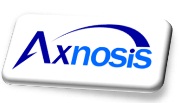Previously I have written up a post on how to run multiple workflow websites on the same server. The instructions are pretty IIS 6.0 specific, so here is an update on how to do this on IIS 7.
Step 1 – Create a new business connector configuration
1. Click start, control panel, administrative tools, Microsoft Dynamics AX 2009 Configuration.
2. Select Busines Connector from “Configuration Target”
3. Click Manage, Create Configuration.
4. Provide an intuitive name for the business connector configuration e.g. AX2009_DEV. You will need to use this in a few minutes again, so make a note of it.
5. Click ok.
6. Select Connection tab, select the AOS that is already there and click edit.
7. Provide the correct server name, instance name and TCP/IP port, click ok.
8. Click apply to save your new configuration.
9. Select your previously selected configuration and click ok (this is so that your already existing website will still work).
Step 2 – Duplicate the website files
1. Open up My Computer and navigate to c:/Program Files/Microsoft Dynamics AX/50
2. Duplicate the Workflow folder and rename the new folder to something intuative like “WorkflowDev”
3. Edit the web.config file inside the newly created folder using Notepad or similar text editor.
4. Replace the line “<appSettings/>” with
<appSettings>
<add key="BUSINESS_CONNECTOR_CONFIGURATION" value="[BUSINESS CONNECTOR NAME FROM STEP 1.4]" />
</appSettings>
5. Save and exit notepad
Step 3 – Create your website application pool
1. Open IIS Manager: Start, Control panel, Administrative Tools, Internet Information Services (IIS) Manager
2. Expand your server node, Click application pools.
3. Click add Application Pool (on the right)
4. Enter and Application pool name E.G. MicrosoftDynamicsAXWorkflow50Dev
5. Select .Net Framework v2.0.50727
6. Select Classic from the Managed pipeline mode.
7. Click ok to close.
8. Select your newly created application pool, click advanced settings.
9. Ensure that the managed Pipleine mode is set to classic.
10. Under Process Model -> Identity, click “…”, select custom account, click select, enter your bcproxy account details used for your previous workflow website. e.g. domain\bcproxy. Click ok to close, click ok to close the select window.
11. Set the IdleTime-out (minutes) setting to 0.
12. Set Regular Time Inteval (minutes) (under Recycling section) to 0.
13. Click ok. Your application pool is now setup.
Step 4 – Create Application
1. In IIS Manager, expand the Sites node, expand “default website”
2. Right click on default website and click “Add Application”
3. Provide a name for your application e.g. MicrosoftDynamicsAXWorkflow50Dev
4. Select the application pool you created in step 3
5. Under the physical path node click … and browse to the folder you copied in step 2. e.g. C:/Program Files/Microsoft Dynamics AX/50/WorkflowDev, click ok
6. Ensure that your connect as settings are set to Pass-through authentication.
7. Click ok.
Step 5 – Select your website with AX.
1. In Dynamics AX 2009, naviagate to Administration -> Setup -> Workflow Infrastructure configuration wizard, under website select your new application that you created e.g. http://myserver:80/MicroftDynamicsAXWorkflow50Dev
2. Validate the website and complete the wizard.
You should now have multiple workflow websites running successfully in IIS 7.0
For more information on setting up your workflow infrastructure in dyanmics Ax 2009 check out this post.
Happy Daxing!







